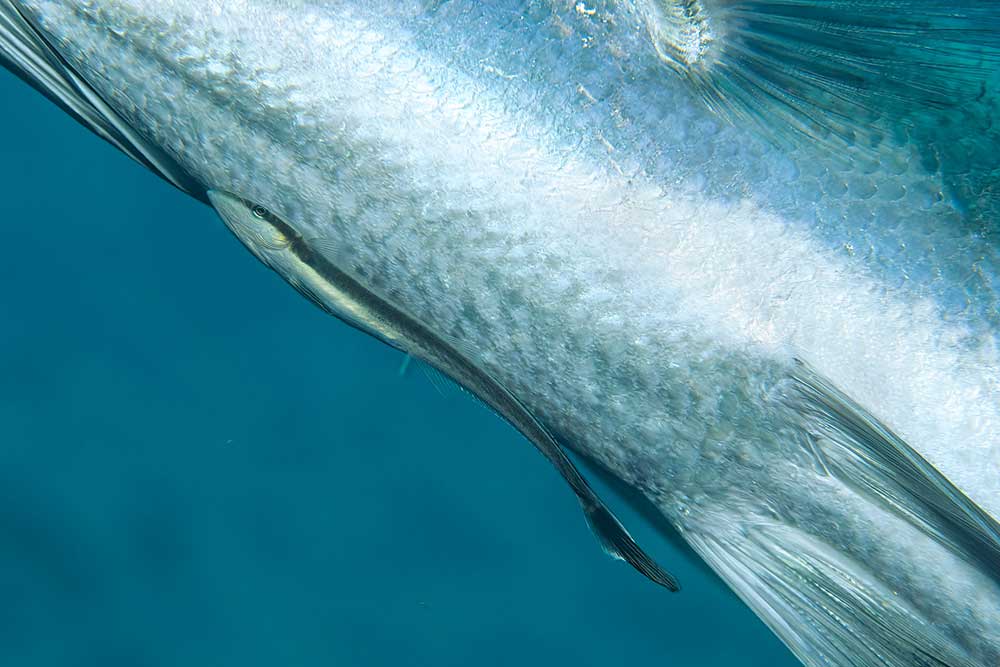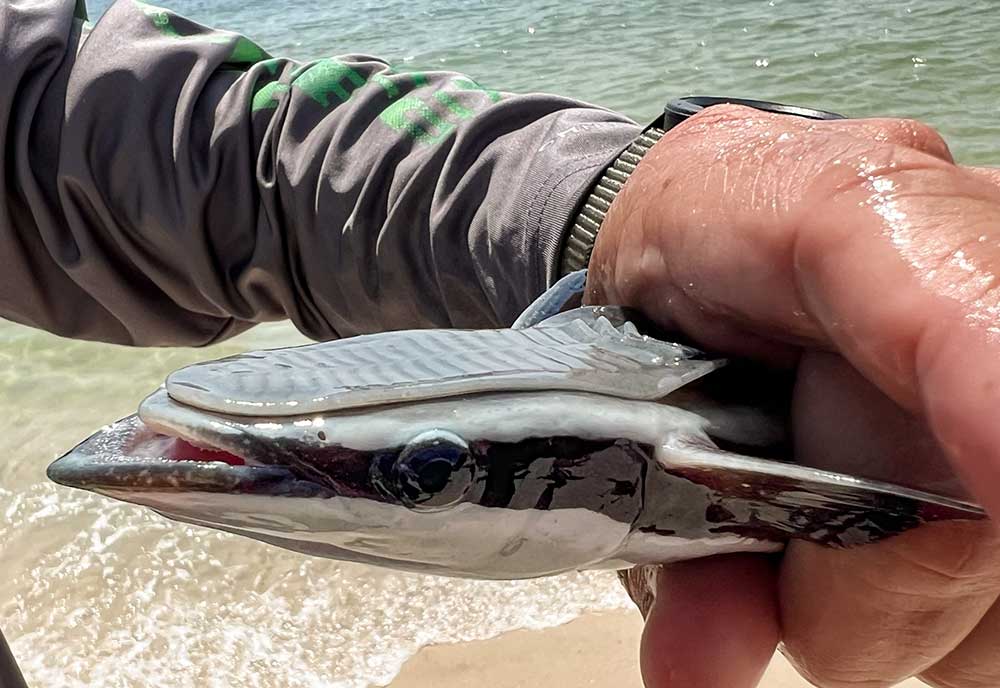Along for the Ride
Remoras attach themselves to a shark or other host and hang on.
By Karina Kumar

It's a hitchhiker's life for the remora. The long, thin, slate-gray fish is found almost exclusively catching free rides through the water.
The remora, also known as a suckerfish, attaches to a host (often a shark, ray or whale) using the flat, oval-shaped dorsal fin on top of its head. That fin has a soft outer lip for suction and linear rows of rough tissue that create friction for the remora to hold on tight to its host.
“It's like a suction cup on a window or a Nerf dart,” says Mark Fisher, science director for the Coastal Fisheries Division at the Texas Parks and Wildlife Department.
The remora needs water constantly moving over its gills to survive, so its host helps the remora meet that need without expending its own energy. That host is also the remora's meal ticket — it eats leftover scraps from its host's meals — and sometimes its waste, too.
“They have a pretty easy life — just find something big and attach to it and just coast around and wait for scraps or whatnot, and that's it,” Fisher says.
People used to think remoras were just another parasite, causing harm to their hosts. In fact, remora is a Latin word meaning hindrance. But, despite its strong suction abilities, the remora does not hurt its host in any way. In some cases, the remora helps out its host by eating parasites on the host's skin.

Fisher says the remora's relationship with its host is commensal, which is when one species benefits from the relationship (the remora) and the other is neither harmed nor helped (the host). Some consider the relationship symbiotic, meaning both parties benefit, because of the remora's specialty cleaning service.
There are eight species of remora, all of which are found in the Gulf of Mexico. Their size can range between one and three feet long. Some species will attach only to a whale, while others opt for manta ray. But the most common is the Remora remora, which is not particularly picky about its vehicle. It will attach to sharks, whales, turtles, manta rays and even sometimes divers and boats — any large animal (or object) they think will provide them with a smooth ride and some tasty leftovers.
“Once you see one, you will never forget it,” Fisher says. “There's just nothing else like them.”
If you are trying to find this hitchhiker, you'll have the most luck looking for its ride first.
Common name:
Remora, or suckerfish
Scientific name:
Eight species in the genus Remora
Habitat:
Tropical and subtropical oceans around the world.
Diet:
Small crustaceans, scraps from host's meals, sometimes squid, small fish and floating organisms in
the water.
Did you know?:
Some species of remora live inside the mouths of sharks or rays.

